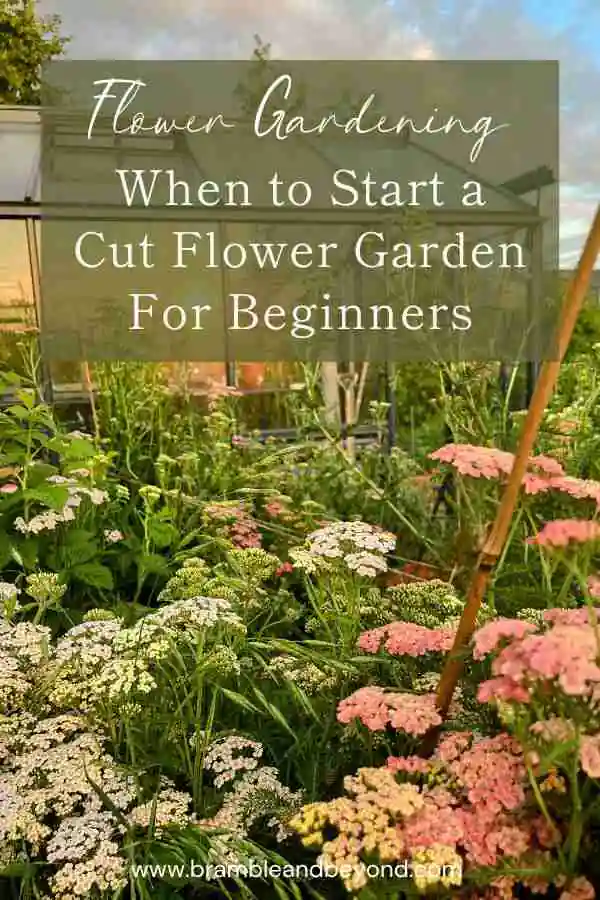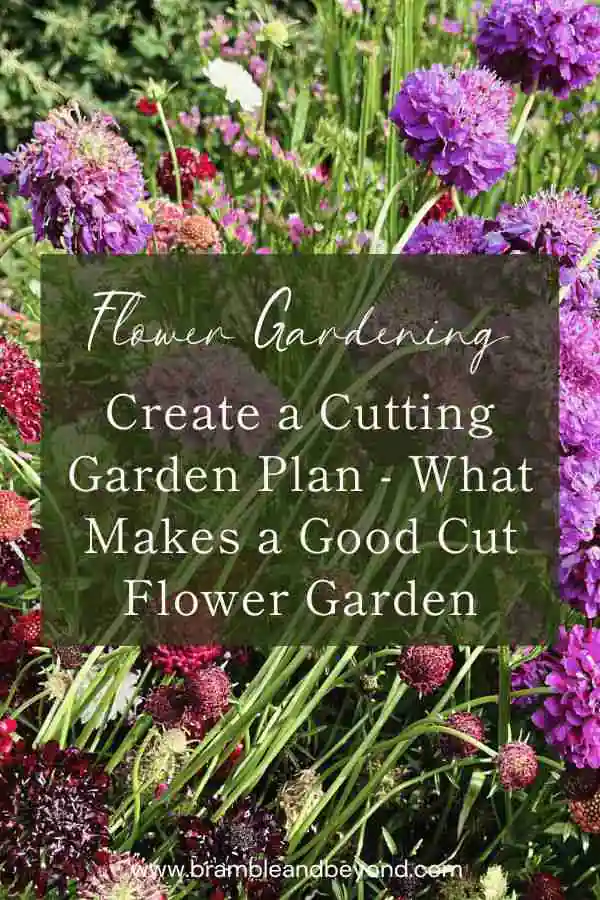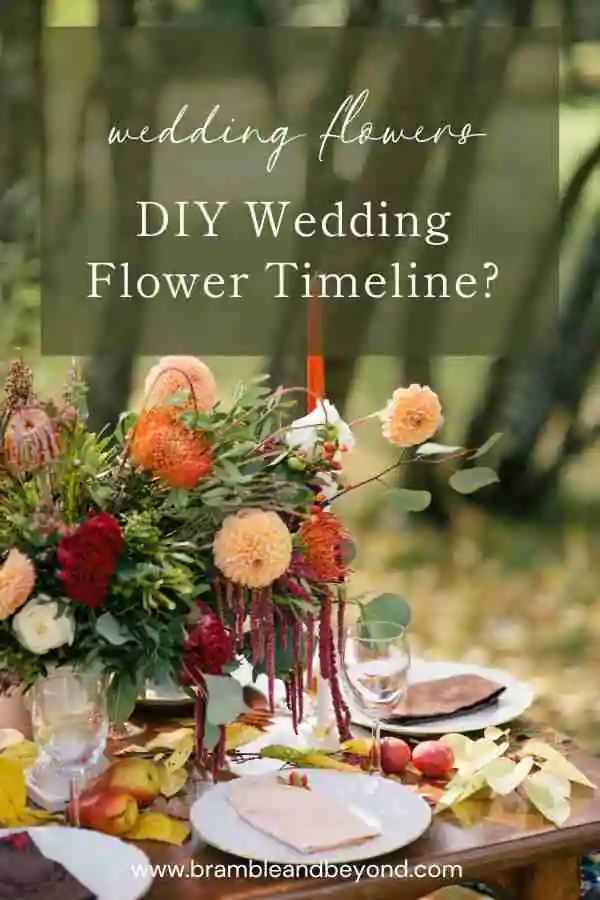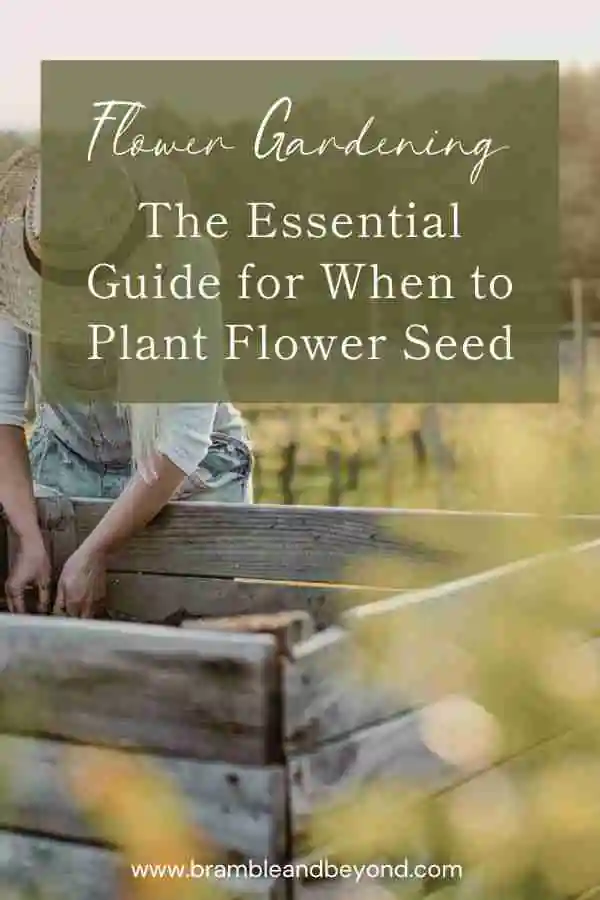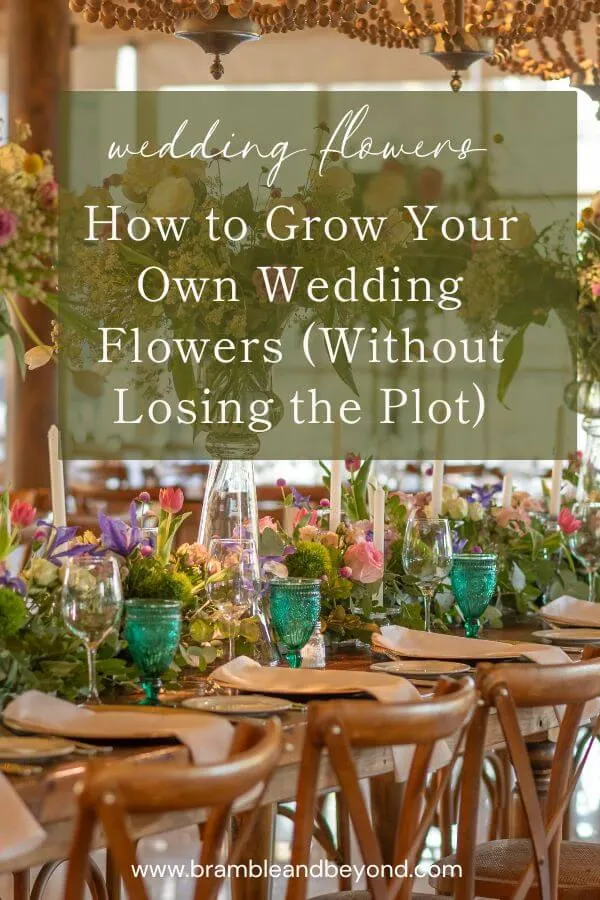Disclosure: This post may contain affiliate links, meaning I get commission if you decide to make a purchase through my links, at no cost to you. Please read my Affiliate Disclosure for more information.
Whether you’re looking to add a weekly pop of colour to your front room or create beautiful dried flower wreaths, a cut flower garden is a fantastic way for beginners to grow all the flowers they need in a sustainable and seasonal manner. However, many people are unsure about when is the ideal time to start a cut flower garden.
As a general guideline, you can grow the widest variety of flowers by starting to sow annual seeds in spring. However, depending on the specific flowers you want to grow, there is always something you can start growing in pretty much any month of the year.
From tulips and daffodils in the springtime to cosmos and zinnias during the summer, there are plenty of flowers that can help transform your house into something special at any time of the year.
So, if you’ve been wondering what you can grow and when is the best time to start a cut flower garden for beginners, keep reading for some helpful ideas.
When is the best time to start a cut flower garden for beginners?
It goes without saying that it is essential for you to start growing specific flowers at the right time of year for each flower type. There is no point starting half-hardy annuals in November, and planting tulips in March. However, there is always something you can start growing at any point in the year.
In reality, a flower grower’s year starts the year before the current calendar year. You can lengthen yourr growing and blooming season by starting biennials in early summer the previous year and hardy annuals in the previous autumn for flowers the following year. Spring sowings will then simply top up what you already have on the go.
So whenever you decide to start a cut flower garden for beginners, there will always be suitable flowers to grow.
A critical factor in determining what to plant, is knowing the expected date of the first and last frosts of the year. In the UK, the last frost is sometime in mid-May, and the first frost could be as early as mid-October.
What to plant in summer (June – August)
Early summer (June) is the perfect time for beginners to start growing biennials. Biennials have a two-season lifecycle. During the summer, their roots will establish themselves. Then, a cold snap in the winter encourages the flowering stems for the following spring and summer. Unfortunately, a warm winter will result in poor flower production for this group of plants.
Biennials are good for filling the ‘June gap’ when bulbs finish and before annuals/perennials start in earnest. Some easy biennials to grow for beginners to try are Campanula, Foxglove, Honesty, and Sweet Rocket.
Up until 12 weeks before the first frosts of the year, you have the opportunity to sow any annual hardy and half-hardy seeds for flowers that will bloom in the same season. So in the UK, if the first frost is expected on the 1st of November, you can sow most annuals up to the 9th of August and hope to have some beautiful flowers in October.
Please keep in mind that this timeframe is based on the first frost occurring on the 1st of November. If the frost comes earlier, all the flowers may be lost.
If you are planting in succession, this extra time will give you multiple batches of extra flowers. However, once you get the hang of things, planting new seeds in August with the expectation of flowers by October can be quite stressful and may not be worth your time or the seed.
Spring sown flowers like cosmos, zinnias, and dahlias can easily last until the first frosts, so it may not be necessary to sow more seeds. Plus, tending to and harvesting your flowers will keep you busy without having to think about sowing more seeds.
Based on my experience, I typically make my last flower sowing for the current season in early June. After that, all my sowings are focused on flowers for the following year.
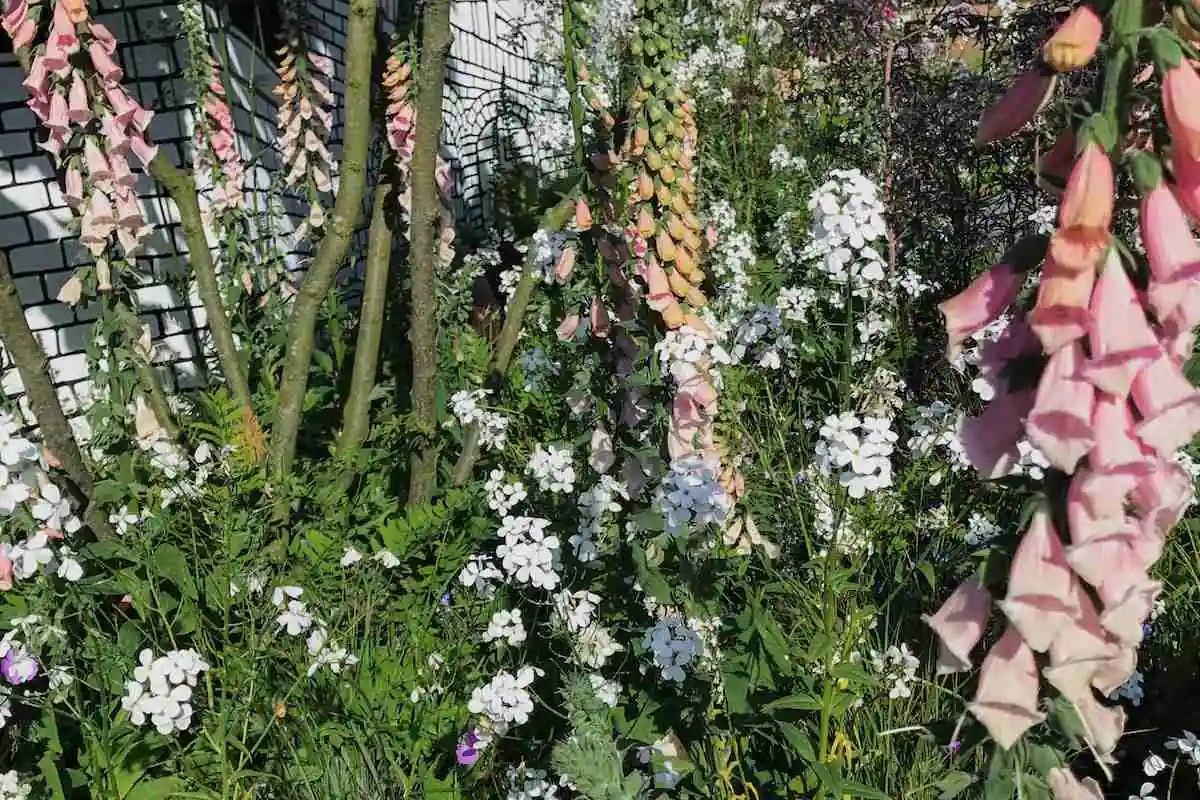
What to plant in autumn (September – November)
You can start hardy annuals in autumn, ready to bloom in early spring the following year. Sow the seeds in mid-late August/early September to give them time to germinate and establish strong enough plants to be planted out over winter. Examples of some hardy annuals that you could make a start on at this time of year are sweet peas, nigella, antirrhinum, larkspur, or daucus.
I like to sow them around the 15th August, so you still have some warmth and light to get them germinating outside. If you are going to overwinter them in a cold greenhouse then you can sow them later. It’s a bit of a battle with the weather and the slugs at this time of year, and new seedlings are an easy target.
September through November is also the main bulb planting period. Alliums and daffodils should be planted early in this season, September and October are perfect. Tulips are often planted after the first frost and can be planted as late as January. I tend to plant them in November, otherwise it is too cold and wet for me to want to be out in the garden digging.
Anemones and ranunculus are corms that you can also plant in autumn. Ideally, start them early enough so that there are established plants before the risk of frosts. Ranunculus are relatively hardy once established but like warmth to get them started.
Autumn is also an excellent time for you to plant perennials, trees, and shrubs. The ground will still be warm from the summer, and they will stay well hydrated over the winter. This is often better than planting in spring, as it is easier to keep them hydrated to get them established.
What to plant in winter (December – February)
Winter is unsurprisingly the one time of year when you have the fewest options available to start growing. But there are still some possibilities.
You still have time to plant tulips and ranunculus. Tulips can be planted in January, as they only need about three months to grow. I’ll hold my hands up and say I always forget the ranunculus until January and don’t have too many problems, although maybe slightly later flowers.
Hardy annuals are frost-tolerant, so they can be sown under cover in January or February. However, you may want to wait until spring for more warmth and better light levels, as you won’t be able to plant them out any sooner. However, if you are desperate to start sowing something, perennials seeds can be sown anytime, and the sooner you sow them the better chance you have to get flowers this season. Achillea and feverfew are perfect examples of this.
If the ground isn’t frozen, you can also still plant perennials, trees, and shrubs.
What to plant in spring (March – May)
Spring is the time for you to really get busy in your cutting garden.
Hardy annuals can be sown in earnest from March, and depending on the last frost date, you can also make a start on the half-hardy annuals.
Some half-hardy annuals must be left quite late in the season, in April or May, as they prefer more light and warmth. Zinnias are an example of this. They are one of the last seeds to sow as they will germinate easier once the temperatures are warmer.
Spring is also the time for you to start sprouting dahlia tubers. However, they are tender to frost, so you should wait until the risk of frost has passed before planting them outside.
Early spring is also a good time for you to plant perennials, trees, and shrubs. However, keeping them hydrated throughout the summer is essential until they are established.
Now is the time to start your cut flower garden for beginners
If you’ve been thinking about starting a cut flower garden as a beginner, I’m here to tell you that NOW is the ideal time to begin! You can find more examples of what to grow in your cutting garden here.
The key is to plan ahead and have realistic expectations and make sure you have the right tools ready.
Once you’ve had a few seasons of experience, you’ll be well prepared to take full advantage of all the options available to extend your growing season.
Learn more about how to start and grow a cut flower garden in this series of blog posts:
- The 9 Benefits of Starting a Cutting Garden
- How to Start a Cut Flower Garden – 7 easy steps
- What’s the Best Cutting Garden Layout: How Much Space Do You Need?
- The Tools You Need to Create a Cut Flower Garden
- Cutting Garden Plan: What Makes a Good Cut Flower Garden
- When to Start a Cut Flower Garden For Beginners
- How to Grow Flowers For Cutting: Flower Bed Maintenance
- Flower Bed Maintenance: A Guide To Watering
And if you want to do it with the minimum of trouble find out the mistakes I made in starting my flower patch.
If you are ready to buy your seeds I have all of the easy cut flower seeds to grow in my shop. Shop Now

